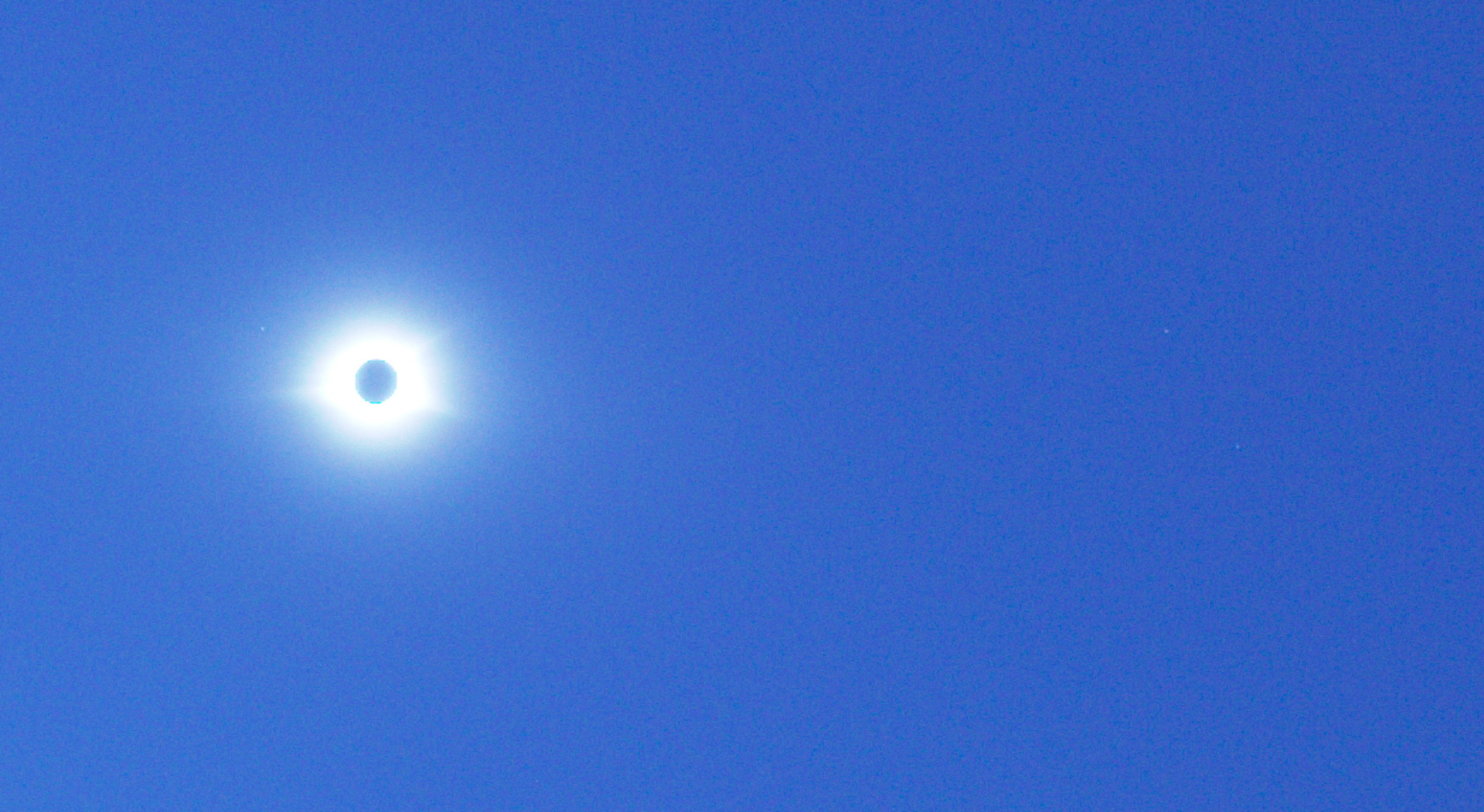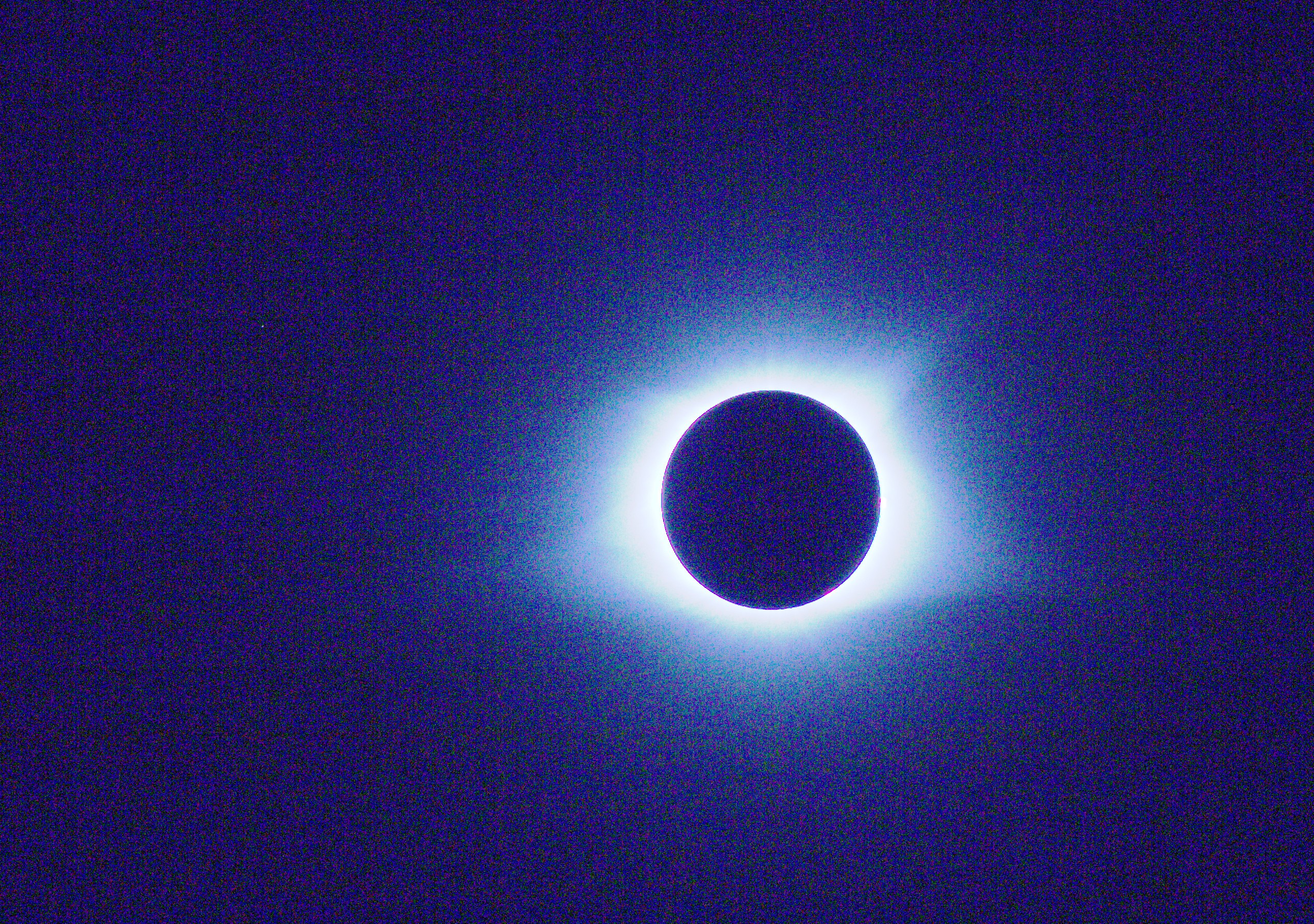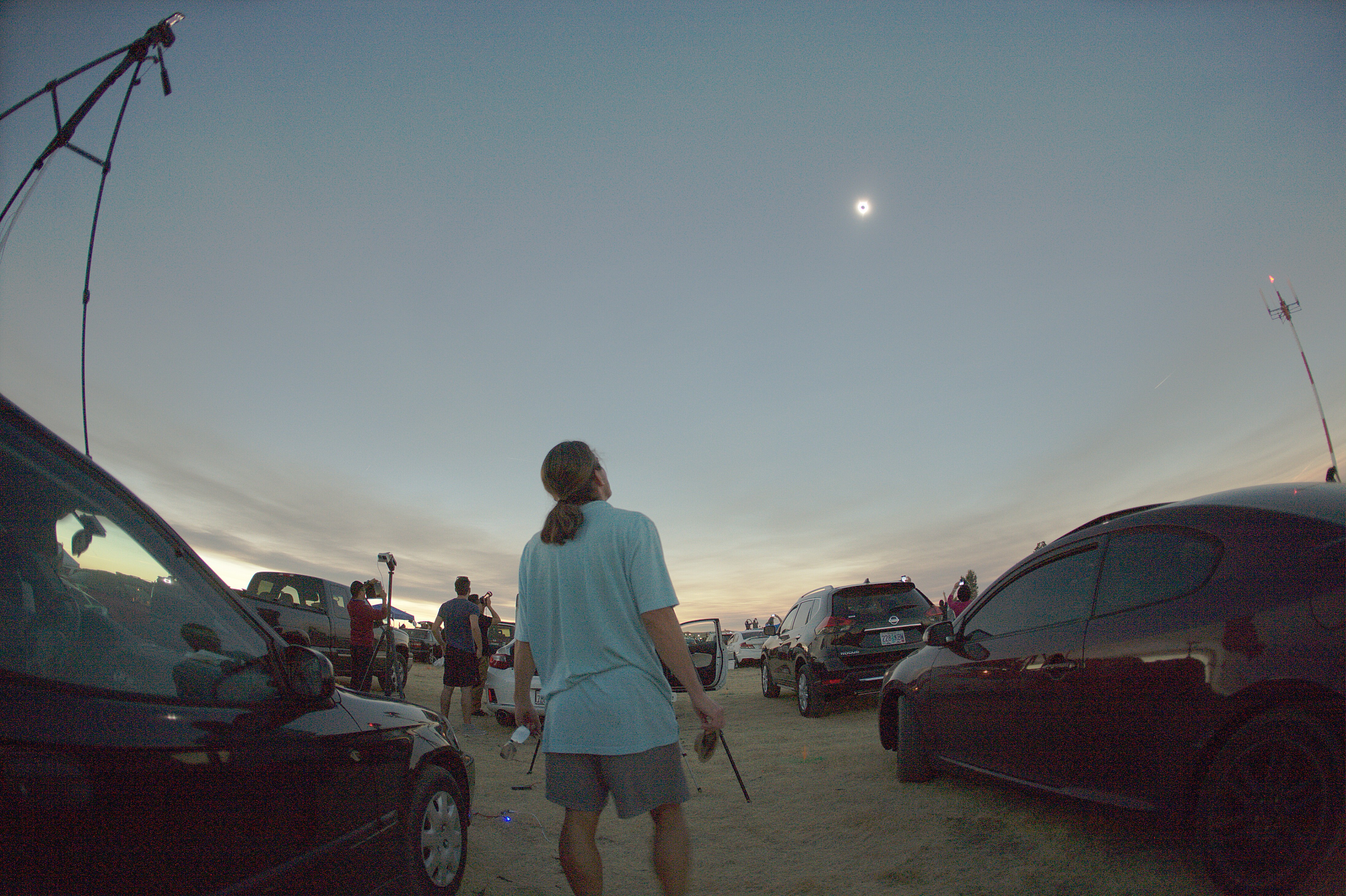It was 1 of the things you thought would never happen in your lifetime. 103 GB of data was captured in 3 hours by 7 cameras. The T4I shot a CU timelapse at 1/200, F5.6 ISO200, 200mm The T4I got 62 frames of totality, manely limited by the slow SD card.
The hour before totality was very busy. The amount of checklist rechecking, camera blocking, camera reconfiguring, reframing of the drift shots was intense. 10 minutes before totality was a race to start all the cameras. The Mark III went into an excessively fast shutter bracket. It required a faster shutter speed to focus, but this wasn't reset to the slower shutter speed needed for exposing the stars. Magic Lantern wouldn't stop shooting, but fortunately there was enough time between shots to adjust the shutter without stopping it.
As the 3 DSLR's clicked furiously, the lion now turned to using his own eyes. The lion just stood & stared at the sun through the glasses. The sliver of light quickly got smaller & smaller. After the episode with Magic Lantern, it all happened extremely fast. There was no time to gather someone to hug or tweek any cameras, now.
Then the mass shouting began, including "glasses off!" After a careful move to pull the filters off the cameras without shifting focus, it was time to stare & try to remember. The sky was now black. The familiar yellow ball we had known our entire lives was gone. Floating perfectly rock solid in the blackness was now a very large, perfectly smooth, perfectly white cobweb with a black disk in the middle. The sun's true form had been revealed.
4 tendrils extended many solar diameters from the black disk in a floppy X, fading perfectly smooth off into the darkness, exactly as simulated a week earlier but now rotated on its side. Unlike the simulation, it was all white & the tendrils were not curvy but extending straight out. The texture was smoother than anything ever made by humans.
Very small, bright spots from flares dotted the edge. It was much bigger, contrasty against the blackness, & smoother than what any camera had ever gotten. The tendrils of white were much more defined than any photo. It was such a remarkable incarnation of the yellow ball we had known all our lives, it made the lion want to cry. A father who had spent the whole morning scolding his 2 daughters suddenly became transfixed, screaming "oh my god! It's so beautiful!"
The light changed slightly as the moon moved, then a sudden, blinding spark of light came as the sun reappeared. Let a few unfiltered shots in before replacing the filters. To the naked eye, there seemed to be very faint shadow bands racing down the posterboard from west to east, but the gopro detected nothing. At 120fps, in this darkness, its dynamic range was too limited to see such a faint change of light.
Sadly, the Mark III & gopro's were flops. It was too smokey to see any stars of note or any shadow bands. There were some stars right next to the sun, but the corona was too bland in this focal length & the only stars were too close to it for anything to be rescued from the bland corona. A longer lens was minimum for capturing any stars.
It would have been more useful if the Mark III took global exposure brackets through a long lens to try to make a still of the complete corona. The gopro should have made a selfie video from behind the lion to complement the video from in front. The worksheet originally planned using the Android phone for this shot, but the iPhone bricked itself with growing log files. The Android phone had to be used for the front shot. There were also problems framing the shot for behind the lion & the lack of auto exposure while fixing focus on the iphone.
That angle is lost. You're now going to be hitting yourself forever, but it was based on flawed weather forecasting.
------------------------------------------




7 years later, a number of shots were revised with improved software. Stars became visible in the 50mm & 200mm. A bit more of the corona was visible in the selfie. The selfie was a 15mm fisheye. It might have had room for better composition with a longer lens, but it might have entailed too much labor. The selfie remanes one no-one else has ever gotten.
 lion mclionhead
lion mclionhead